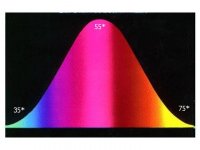R
rrt
Well-known member
- Joined
- Nov 20, 2006
- Messages
- 2,291
When I was young, the icons of fly-fishing wrote that 40 degrees was the lowest temp for effective fishing and that 39 degrees was impossible, something I have found to be false. However, my water thermometer goes down to only 32 degrees, and that was the water temp today, and I didn't get a bite in water where I normally can catch at least a few trout. Yet, two days ago in 34-degree water, I landed a handful of fish, including several nice ones. Now for the question: What is the lowest water temperature that you think is realistic for possibly catching and releasing a few trout in a couple of yours? As of now, I think it's more than 32 degrees.




